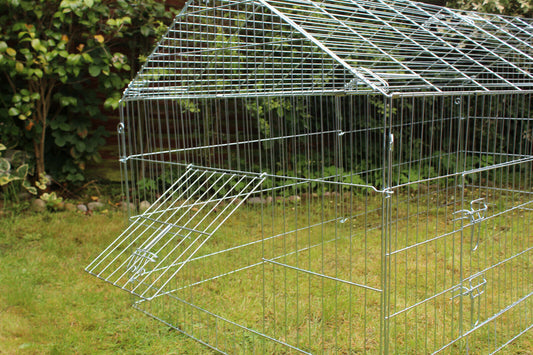“How can I stop my dog pulling on the dog lead?” is a very common question asked by dog owners around the globe. When you pick up your new family member you usually envisage a peaceful, enjoyable stroll though the woods with a happy, calm pooch walking by your side. Unfortunately, this image is usually replaced with the reality - your dog pulling as though he’s a husky dragging a sledge in the snow, your arms extended further than Stretch Armstrong and your face beetroot-red from such an exhausting workout/dog walk. So, how do you stop your dog turning a peaceful walk into an exhausting chore?
Firstly, it’s important to understand why your dog pulls. A dog’s walking pace is twice as fast as a human being’s, so it’s natural for them to walk faster than us which results in the lead pulling. Also, dogs that pull have usually been conditioned by us to do so because the harder they pull, the faster we walk, therefore the quicker they get to their desired location (typically the fun off-lead part). It’s important to remember this and not to just assume that your dog is being naughty. Dogs are opportunists by nature so will do what works for them. If pulling gets them to the woods quicker then they will pull!
To begin your walk, always make sure you stock up on lots of tasty dog treats that your dog wouldn’t normally be given at home. Tiny pieces of cheese, sausage or chicken all work well as they’re considered much more desirable than your average dog kibble. The dog treats need to be of high value because they will be competing with all the wonderful smells and sights outside on the walk, so they need to hold your dog’s attention.
- Step outside the door calmly, asking for a sit before exiting. Your dog will naturally pull as this is all they know up until now, so instead of yanking their lead or shouting, say nothing and do nothing but stand still and wait for your dog to look to you for guidance. The second he looks to you, call him to your side and reward. Now this exercise will take a while, your dog will be confused at first, so you need to remain patient and consistent. You may not make it past your front garden during the first session but that’s OK, teaching your dog not to pull will not happen overnight and it does require a lot of perseverance.
- Whenever your dog pulls at the dog lead you should stop, as this shows your dog that no amount of pulling will get them to their destination any faster – it actually just slows you both down. If they’re still pulling even after you’ve stopped, turn on your heel and walk in the opposite direction. The second you feel tension on the dog lead, stop, then walk the other way. The more you do this, the sooner your dog will start to learn that walking loosely with no tension means you move forward whereas pulling either makes you stop or walk the other way.
- Always reward your dog the second they’re walking to heel as you want them to know when they’re doing well and following your commands. Verbal praise is great too and keeps their attention and focus on you rather than sniffing with their nose to the ground.
- If your dog isn’t mad about dog food but loves dog toys, then using their favourite dog toy (one you only use for walks so that it remains of keen interest to your dog) as well as verbal praise can also work just as well as treats. The key is to find out what motivates your dog and then use that to teach them to do what you want. If they don’t get rewarded for good behaviour, then it will confuse them as they won’t know what is expected of them. It will also make them less likely to want to work for you. After all, most people work harder if they’re getting generously rewarded for their efforts!
Don’t forget to be generous with your praise, keep the rewards interesting and exciting and keep training sessions fun. Try to remain consistent on every walk. It’s so easy to let your dog pull if you’re not focused but remember that the more you let your dog “off” the harder it will be to teach them and the longer it will take. Dog harnesses are usually more comfortable for a dog and some can even encourage them to pull less, such as the front clip dog harnesses. Contrary to popular belief, dog harnesses will not automatically make your dog pull more provided you choose an appropriate dog harness and use it correctly.
Finally, patience and consistency are the most important ingredients. Loose-lead training can become tiresome but keep the end goal at the back of your mind, that picture of your pooch happily walking by your side, and you will achieve it!
If you enjoyed this article, you may be interested in:









